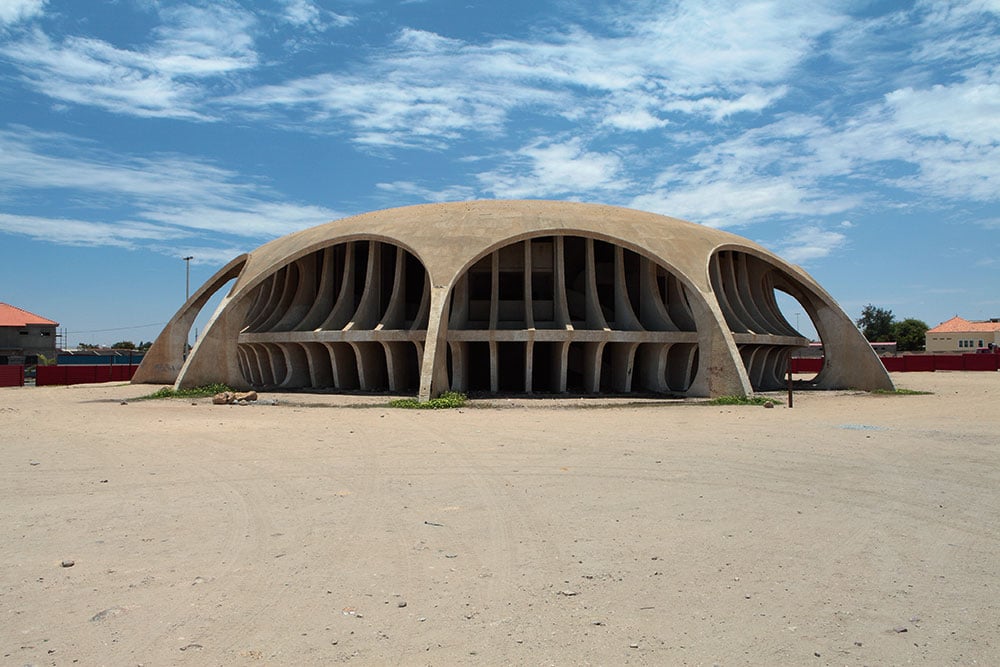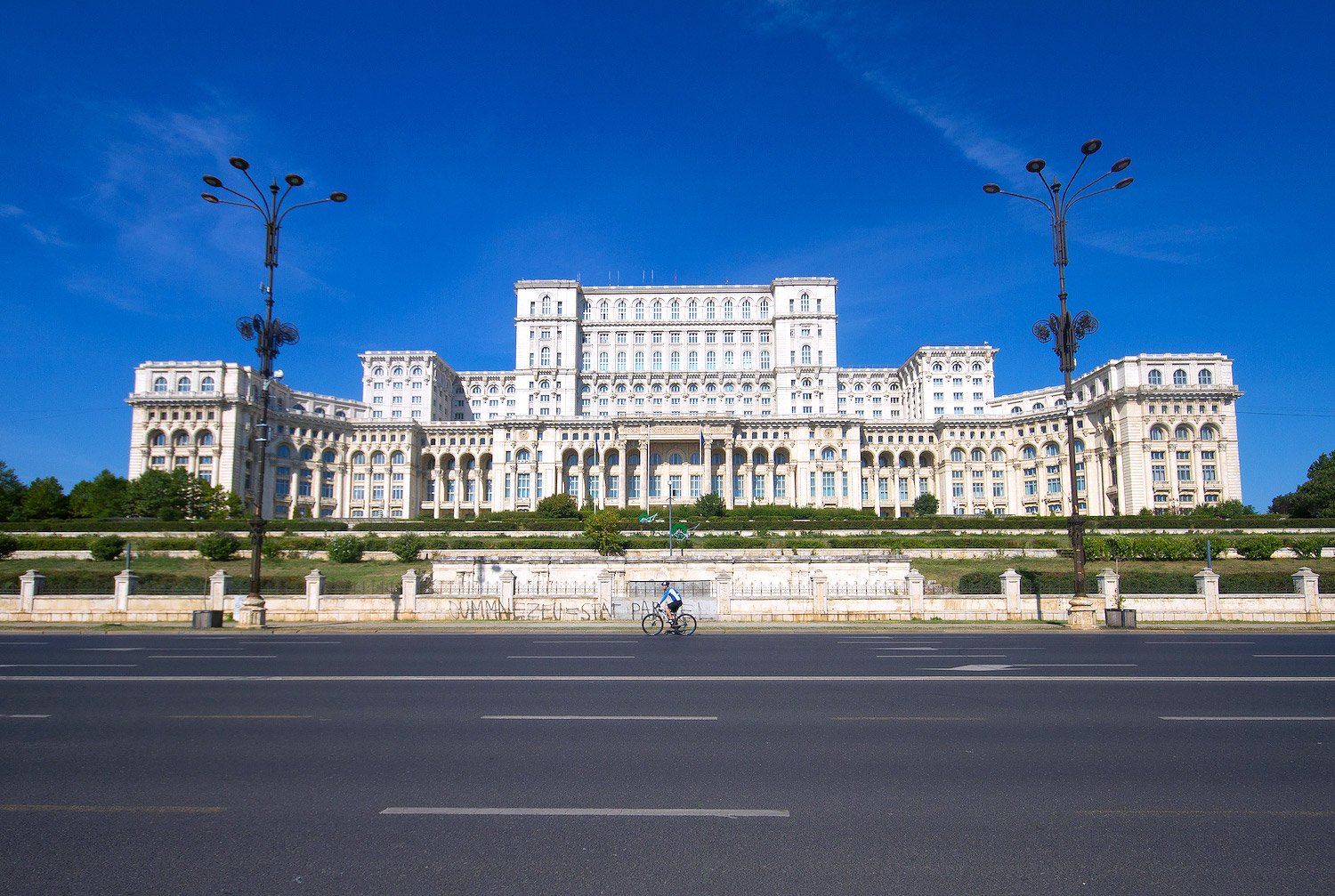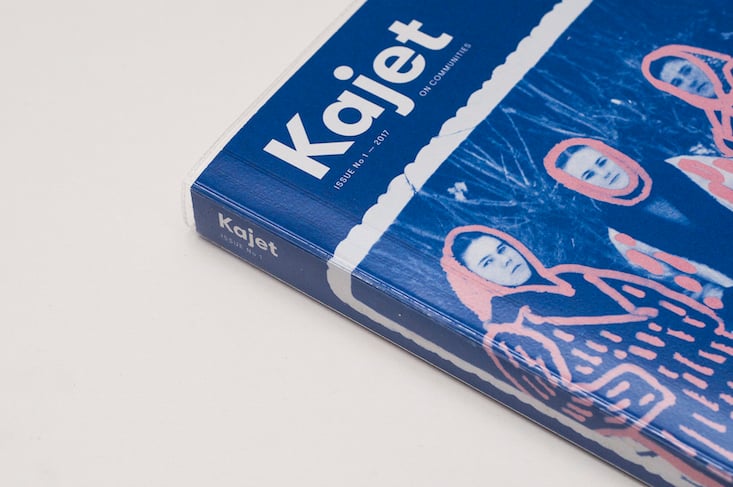Bucharest modernism: one photographer’s quest to capture the crumbling architectural legacy of Romania’s capital
Dozens of once-magnificent modernist villas litter the streets of the Romanian capital. Photographer Bogdan Anghel has made it his mission to shoot and document these neglected pieces of architectural history as they decay amid the cruel realities of Bucharest’s rapidly shifting housing market: in many cases, either doomed to collapse amid the clamour of natural disaster, or suffer the slow, painful demise of carefully calculated indifference.
Bodgan Anghel’s photographic study of Bucharest’s modernist legacy shows a tenderness for its subjects and their wounds. Plaster blisters across weatherbeaten facades exposing bare brick underneath. Once-gleaming ironwork leaves a web of rusting scars. Vines creep along balconies, covering what would have once been pristine surfaces purposefully devoid of decoration. In some shots, whole buildings are veiled in green. The creeper dresses suit them well.
When I lived in Bucharest, many of these buildings sat on my doorstep. On my cycles through the city, I would often hunt these quiet modernist treasures. I say hunt because these buildings hide, quite unremarkable, on sleepy residential streets or busy thoroughfares. It’s only when they are isolated in a frame that their real character comes to light.
Anghel also hunts for remarkable buildings. He first started to notice Bucharest’s modernist heritage a decade ago, drawn in by an interest in minimalist music and design. That’s also when the buildings started to stand out. He was ensnared by their clear lines, and by the architects’ apparent ability to solve complex urban design issues with elegance and ease. Eventually, he decided that the buildings needed to be documented.
Usually, Anghel works by tracking down a particular building that he’s read about online, before wandering the neighbouring streets to find the more anonymous examples. The photos themselves have a timeless quality. “Sometimes I’ll go back to the same spot ten times before the building looks the way I want it to look,” he says. He photographs mainly on Sundays, when there are fewer cars and fewer people. He uses film to show the building’s true texture and colour, as well as a mark of respect for their age. “When I shoot digital, the pictures look too slick for my taste, too much like a 3D render,” he says.
Many of the houses in Anghel’s collection are designed by Marcel Janco, one of the founders of the Dadaist art movement. Janco and his Romanian contemporaries trained in Zurich, Paris, and Vienna before bringing International Style back home to Bucharest. Their repertoire is simple: flat roofs, layered cuboid shapes, porthole windows, glass brick, rounded corners. Some of the houses incorporate more traditional or art deco features. But generally speaking, their clean contours turn their back to the flourishes of Art-Nouveau; their stripped down lightness contrasts with the heavy neo-Romanian and neo-gothic style of the buildings that nestle side by side on central Bucharest’s streets.
Much of the modernist architecture in Bucharest, however, differs from the other, similar movements sweeping Europe at the same time. In Vienna, Berlin, and Frankfurt, the International Style was not purely an aesthetic concern, but a political project. Many of the era’s leading architects were motivated by the idea that beautiful housing should be open to the working classes as well as the rich. Aesthetics and politics were inextricably linked. They built functional, affordable, bright, large-scale social housing. In contrast, Romanian architects mostly served private clients. Janco and others returned from Western Europe to find Bucharest a fertile ground for their aesthetic projects: the capital’s educated urban elite were infatuated with modernism and commissioned the architects to design small residential blocks and private villas.
It was only a twist of historical fate that saw a large chunk of Romania’s housing stock nationalised after the Second World War as the communists took power. Much housing was assigned according to need, and many of the most lavish modernist villas were divided up and distributed to working-class families, who became tenants of the state. After Romania became capitalist once more, the legal status of these houses became more complicated: were they to remain in the hands of the state, or returned to their pre-war owners? During the post-1990 transition, the European Union and other international financial institutions such as the World Bank and the International Monetary Fund pushed Romania towards privatisation of state assets and cuts in state funding. In response, the government passed a series of restitution laws, which allow original owners to reclaim property. In practice, this often means they are reclaimed by developers on their owners’ behalf, with the understanding that they will sell it to them at a knock-down price. This mechanism has created an illicit market where owners are invented, documents forged, and new markets opened to foreign investors.
Earthquakes aren’t uncommon in Romania, and Anghel worries that in its current state, much of Bucharest’s modernism could collapse if faced by more than a moderate quake.
Their opaque legal status explains the buildings’ wounds and exposed brickwork: many of the structures are now crumbling. Anghel says he doesn’t know anyone who lives in these houses due to their architectural merit. The people who care about these modernist structures can’t afford to buy them. Even listing these homes as architecturally valuable (as many already are) can’t save them, as it makes restoration an expensive business. There are those among Bucharest’s political and business elite who are simply waiting for these buildings to collapse, so that they can use the valuable land beneath to build bigger, more lucrative apartment blocks, Anghel tells me.
Anghel is now using his photographs as a platform to fight for the buildings’ survival, putting pressure on local authorities to ensure each structure’s ongoing structural stability. Earthquakes aren’t uncommon in Romania, and Anghel worries that in its current state, much of Bucharest’s modernism could collapse if faced by more than a moderate quake. Others are backing similar efforts to map, list, and protect what Romanian modernism has to offer.
For now, the future is uncertain. Some of the houses in Anghel’s photographs have been visibly restored, but even they can seem strange and off-kilter, with developers unwilling to shell out large sums for expert renovation work. Others are looking to Bucharest’s fast-paced gentrification to unlock funds which will restore the buildings to their former glory — but even this presents new pitfalls.
As Bucharest’s property market shifts, countless families are being evicted from restituted housing. In the almost total absence of alternative social housing, and without any support from local authorities, many of them end up homeless. These buildings could be painstakingly restored back to the glamourous apartments they once were, but with growing swathes of socially-vulnerable people dislodged and displaced from their traditional neighbourhoods in the city centre, few would dare claim that what central Bucharest needs is yet more luxury villas.
Yet while the buildings’ future is debated and analysed, Anghel’s collection could be the last chance to portray Bucharest’s modernism in its fragile in-between state. “You need to have a certain relationship with these buildings in order to capture them in a photograph,” he says. “As they are, these buildings are part of our heritage. We have an obligation to actively protect them, in any way we can.”












